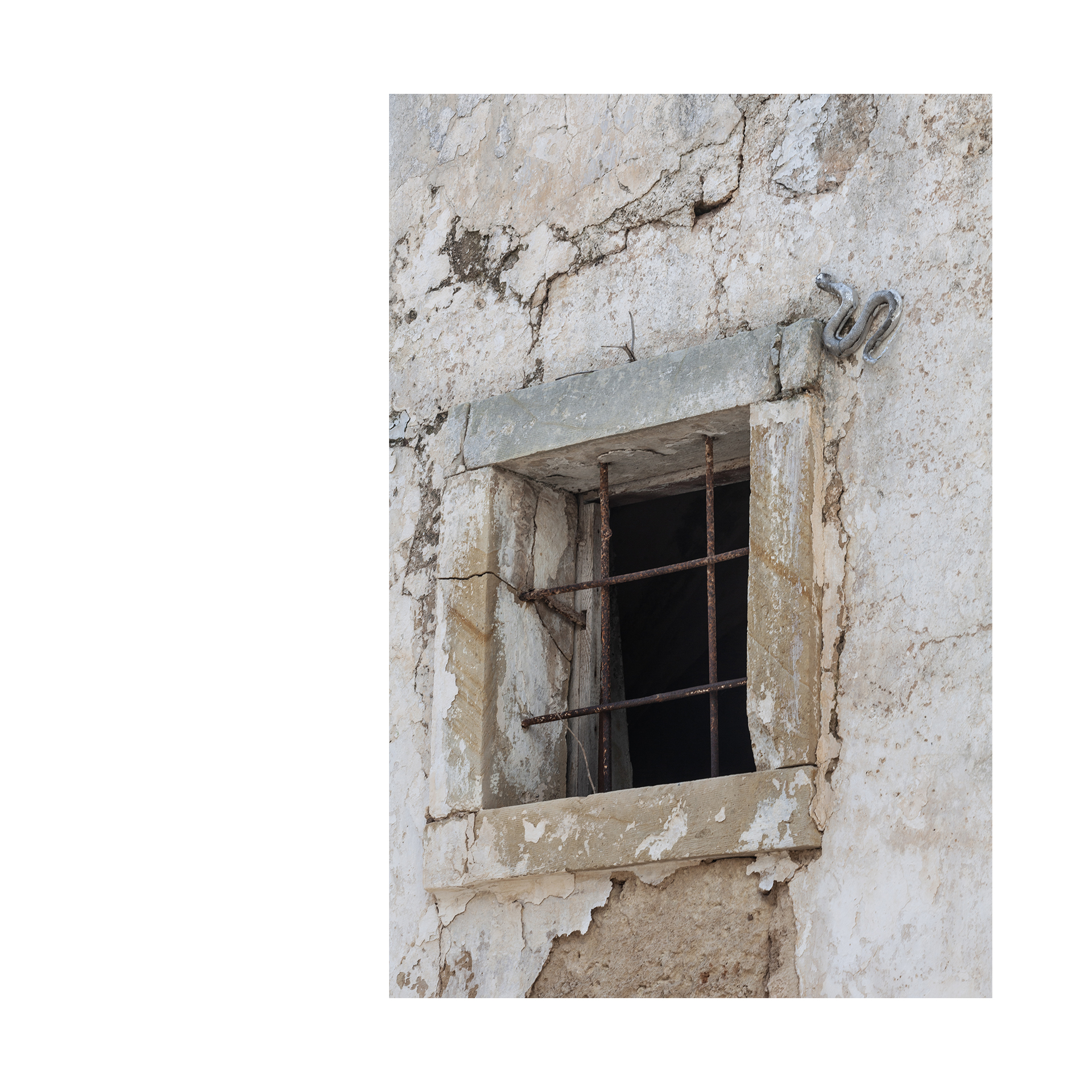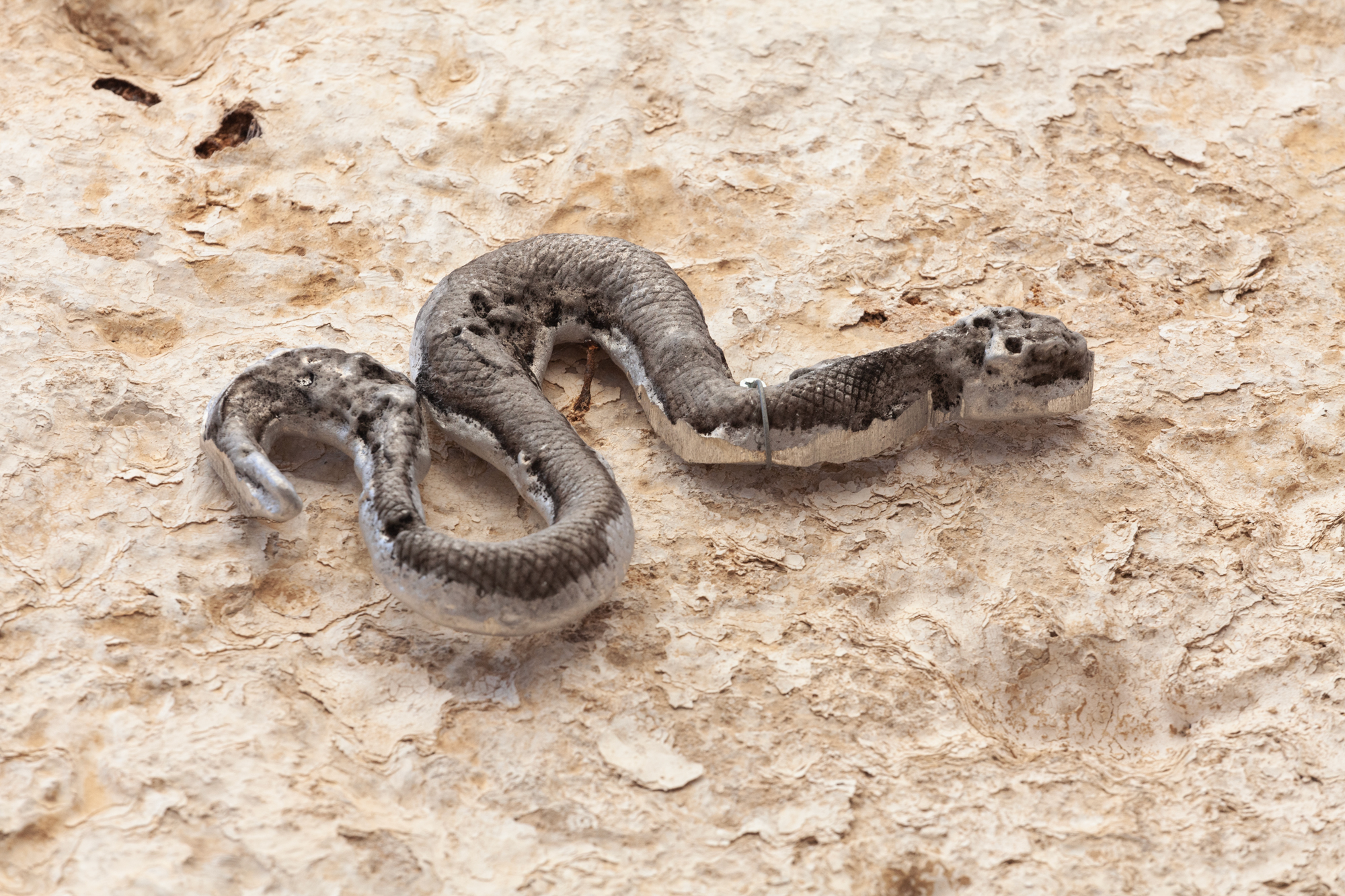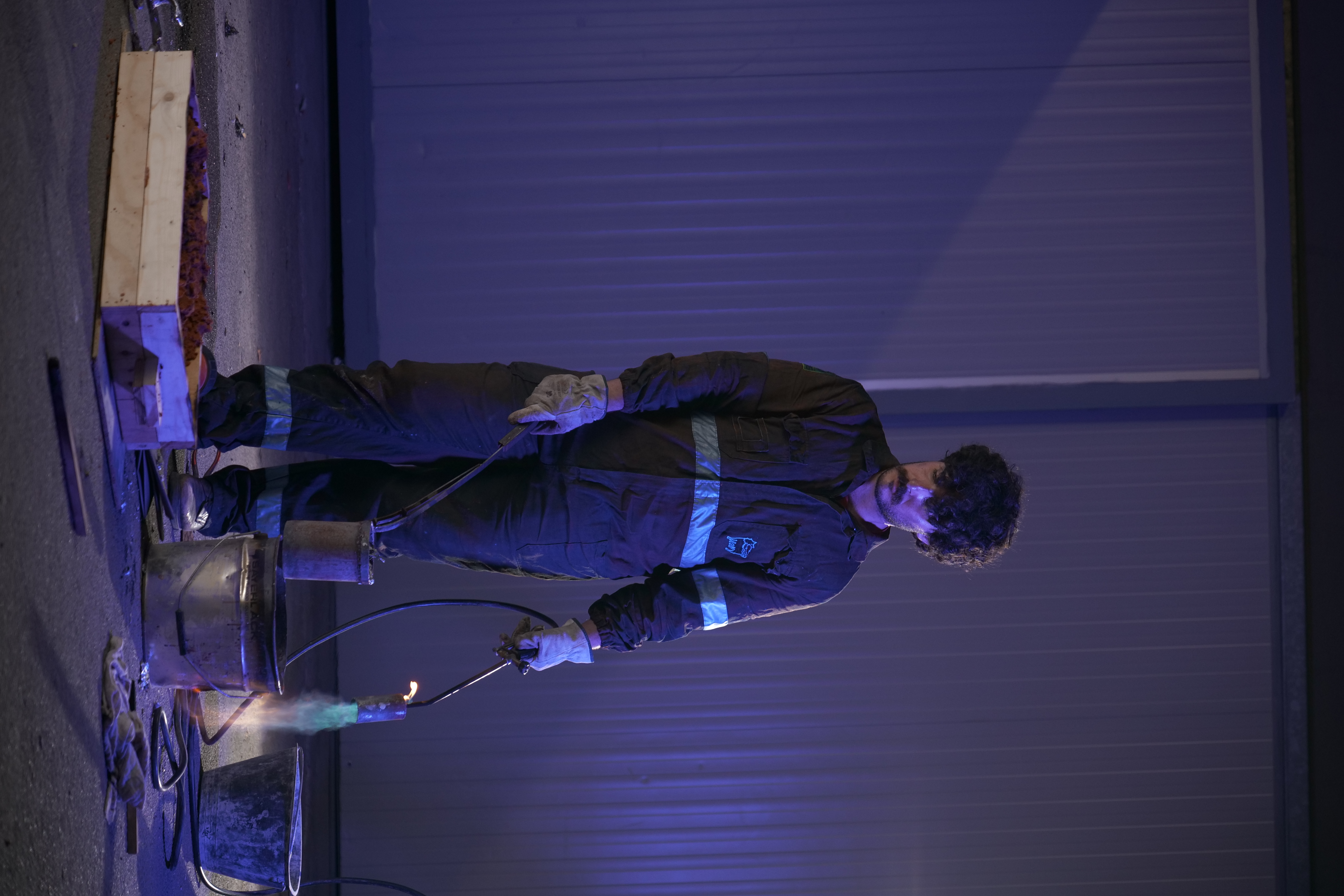Let me in (I hope to enter)
Corigliano D’otranto, a well preserved fortified burg in the south of Italy, has been invaded. The ancient walls and the castle lost the protective function against nature. Snakes, very common in the countryside and always associated with various symbologies finally sprout around the inhabited houses, moving around the old town in a route that can be followed.
Installation and video-performance 2021
Ph. Raffaella Quaranta.
In the context of Ucreate, an European art residency program organized by Big Sur this project was part of a one year research process that saw many collaborations.
Corigliano D’otranto is part of a region called Grecia Salentina, in the southern part of Apulia, in the south of Italy. Located between two mass of water, for centuries has been a Mediterranean crossroad for many populations. Both ancient and medieval greek communities has established colonies on this land and, still today, is a well known region for greek-speaking minorities.


The title of the work comes in fact from an ancient sculpted door frame of an unearthed orthodox temple. The inscription in an old dialect of modern greek and recite: άσε με να μπω, translatable either with “let me in” or “I hope to enter”, probably a sort of warning or the beginning of a prayer.
The concept of limit or threshold to be surpassed or impossible to cross is a leitmotiv that continued to appear written all around the town, sculpted on walls and doors or window-frames. The aristocratic families that inhabited the centre of the town after it’s fortification wanted to remind the casual wayfarers their knowledge of latin (and not greek) and their rank.
The region at that time was colonized by the Spanish crown, the church had of course a great influence and many battles with the help of Norman mercenaries had pushed the greek population, composed mainly by old basilian monks and farmers, to submission.
The greek-speaking population, once composed mainly by farmers and priests, continues to inhabit the region. In the last twelve greek-speaking towns, christianity completely took over and, stuill to this day, the language is cultivated and modified by retired working-class people that sun-bathe on their terraces.

The simbology of the snake is quite interesting in this context for both religion and superstition beliefs. The well known Uroboro, brought to this region by basilian monks, came with a fundamentally different vision of time passage. The snake is represented in many forms all around the ancient ruins and its shapes evolved to be more and more monstrous over time.
It could not be unusual to observe a link between the famous Ouroboros and the medieval dragon, symbol of bestiality and always represented in the acto of submission to Saint George, patron of the town. The connection is yet to be proven, but it certainly fit the region’s history, in that time of passage from Greek to Christian culture.
The development of the video-perfomance came from the analisis on this background, finding links between the ancient and contemporary history of the region. The town tells a story of segregation and exclusion, of defence and torture, but also of coexistence with nature.
An old say in the town tells how the people and the duke, during the invasion by the ottomans, defended themselves by throwing cheese shapes to the enemy, to demonstrate the richness and the endless resources held inside the fortified walls. Of course it was merely a legend, however it indicates how the pride of the people from Corigliano was and still is pretty solid. The ruins of its past inspire several stories. The serpent is the invisible element that runs in the city coming from the past. Is the scary wildness, the original sin and the eternal return. The snake is nature, is the working-class, the farmers held by aristocratic imperialists.
Every corner of the town shows several stories, some true, some completely imagined. The story of the snake invasion was casted trough a performance with the help of recycled materials.
In the performance the relationship between certain corners of the city and the making of the sculptures is underlined. Alberto Mocellin directs this short movie to enhance the beauty of physical work, of sweat and fire.
https://filmfreeway.com/LetmeinIhopetoenter
PH- Alberto Mocellin